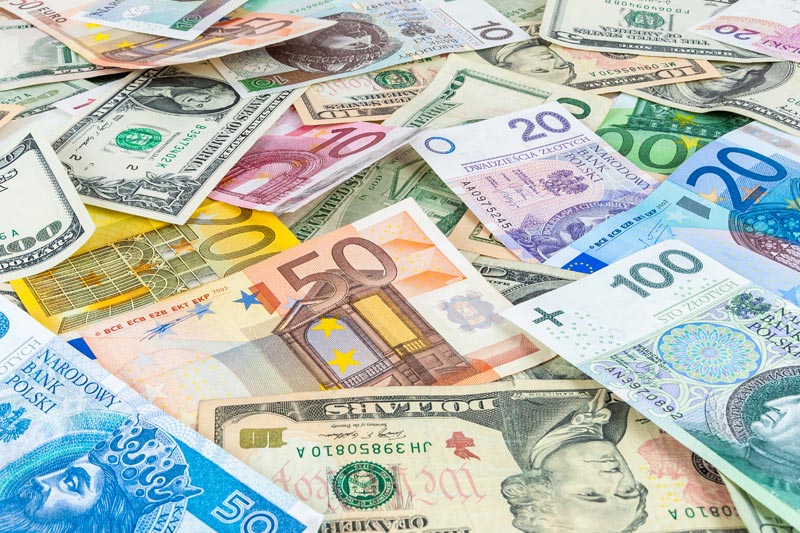Investing.com - The Australian dollar rebounded from an eight-day low to trade higher against its U.S. rival during Friday’s Asian session as traders looked to play riskier currencies.
In Asian trading Friday, AUD/USD rose 0.13% to 1.0264. The pair was likely to find support at 1.0211, the low of March 11 and resistance at 1.0285, the session high.
The pair traded higher after the Australian Bureau of Statistics said producer price inflation there rose 0.3% in the first quarter, topping analysts’ estimates for 0.2% increase. Australia's PPI was 0.2% in the prior quarter.
The Aussie was dragged lower on Thursday after data showed that building approvals in Australia dropped 5.5% in March, confounding expectations for a 1.3% increase, after a 3.0% rise the previous month.
In another Thursday report, the Australian Bureau of Statistics said its Australian Import Price Index was unchanged at 0% last month. Analysts expected a reading of -0.5%.
The Aussie and other riskier currencies got a lift during Thursday’s European and U.S. sessions after the European Central Bank trimmed its benchmark interest rate by 25 basis points to 0.50%. Additionally, ECB President Mario Draghi left the door open to further monetary easing.
Draghi also said the ECB may charge banks to hold excess reserves sent the euro dropping and made gold an attractive hedge. That would translate to negative interest rates, something few nations have experimented with in the past, perhaps boosting the allure of gold in the process.
Traders are expecting the Aussie will trade in a tight range today ahead of the U.S. non-farm payroll data due out later Friday.
In U.S. economic news, initial claims for jobless benefits fell by 18,000 to 334,000 last week. That is good for a five-year low. Analysts expected a reading of 345,000 claims. The U.S. Labor Department delivers the April jobs report Friday before the open of U.S. markets and economists are expecting the addition of 145,000 new jobs. The U.S. unemployment rate is currently 7.6%.
Elsewhere, AUD/JPY rose 0.18% to 100.56 while EUR/AUD inched lower by 0.05% to 1.2744.
In Asian trading Friday, AUD/USD rose 0.13% to 1.0264. The pair was likely to find support at 1.0211, the low of March 11 and resistance at 1.0285, the session high.
The pair traded higher after the Australian Bureau of Statistics said producer price inflation there rose 0.3% in the first quarter, topping analysts’ estimates for 0.2% increase. Australia's PPI was 0.2% in the prior quarter.
The Aussie was dragged lower on Thursday after data showed that building approvals in Australia dropped 5.5% in March, confounding expectations for a 1.3% increase, after a 3.0% rise the previous month.
In another Thursday report, the Australian Bureau of Statistics said its Australian Import Price Index was unchanged at 0% last month. Analysts expected a reading of -0.5%.
The Aussie and other riskier currencies got a lift during Thursday’s European and U.S. sessions after the European Central Bank trimmed its benchmark interest rate by 25 basis points to 0.50%. Additionally, ECB President Mario Draghi left the door open to further monetary easing.
Draghi also said the ECB may charge banks to hold excess reserves sent the euro dropping and made gold an attractive hedge. That would translate to negative interest rates, something few nations have experimented with in the past, perhaps boosting the allure of gold in the process.
Traders are expecting the Aussie will trade in a tight range today ahead of the U.S. non-farm payroll data due out later Friday.
In U.S. economic news, initial claims for jobless benefits fell by 18,000 to 334,000 last week. That is good for a five-year low. Analysts expected a reading of 345,000 claims. The U.S. Labor Department delivers the April jobs report Friday before the open of U.S. markets and economists are expecting the addition of 145,000 new jobs. The U.S. unemployment rate is currently 7.6%.
Elsewhere, AUD/JPY rose 0.18% to 100.56 while EUR/AUD inched lower by 0.05% to 1.2744.
